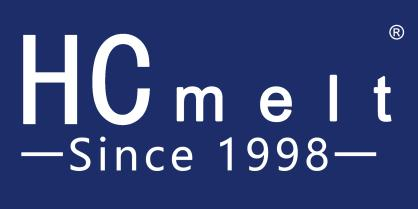

Hot melt adhesive (also called “hot glue”) is widely used because it bonds quickly when molten and solidifies fast. But when you need to remove it — from tools, fabrics, furniture, wood, or other surfaces — it can be stubborn. The key is to choose methods that work with your particular surface (what it’s made of, its heat sensitivity, etc.). Below are several techniques, from safest to more aggressive, so you can pick what fits best.
Before doing anything:
Identify the type of surface or material: wood, plastic, fabric, metal, painted surface, leather, etc.
Assess damage risk: will heat, chemicals, scrapers damage the surface or its finish?
Determine the thickness and extent of the adhesive: just a spot, a thin film, or a thick blob?
This helps avoid causing more harm while removing adhesive.
These are usually the safest first steps.
| Method | When to use | Steps |
|---|---|---|
| Peeling / scraping | If the glue has cooled and has some edge or lift | Use a plastic or wooden scraper (avoid metal if it can scratch). Gently wedge under an edge and peel off. |
| Freezer trick | With fabrics or plastics that tolerate cold better than heat | Place the item in the freezer for an hour or more. The glue becomes brittle. Then tap or gently crack it off, or peel. |
| Softening with heat | For thick glue on heat-tolerant surfaces | Use a hair dryer or low-setting heat gun to warm up the glue just enough to soften it. Then scrape gently. Be careful not to overheat or deform the base material. |
When mechanical methods fail or when adhesive residue remains, solvents are useful.
Isopropyl alcohol (rubbing alcohol / denatured alcohol): Common and relatively safe. Dabbing or soaking with a cotton swab or cloth often helps loosen adhesive.
Acetone or nail polish remover: Stronger solvent. Effective at dissolving glue, especially for stubborn or thick patches. But beware: acetone can damage plastics, finishes, paints. Test an inconspicuous area first.
Commercial adhesive removers: Products made specifically to break down glue or adhesive residues. Always follow the label instructions, ventilate if needed, and protect skin/gloves.
Sometimes the most effective method is using both heat and solvent:
Warm the glue just enough to soften (with hair dryer or heat gun on low).
Apply solvent (alcohol or acetone) around the edges and allow it to penetrate.
Use a scraper or pick to lift off by small bits. Reapply solvent as needed. This helps avoid harsh force and reduces risk of surface damage.
In some cases, warm water (possibly with soap) or long soaking can help:
For fabrics, you may soak in warm water to soften the glue and then gently scrub.
For wood or non-porous surfaces, warm soapy water can help loosen milky or softened adhesive residue.
Extended soak (12-24 hours) might help in cases where other methods are too aggressive.
Wear gloves to protect your hands from solvent burns or irritation.
Use solvent in a well-ventilated area (indoors with windows open, or use a fan).
Avoid direct contact of strong solvents like acetone with painted, varnished, or delicate finishes unless you know the finish is resistant.
Avoid overheating materials; heat guns can warp plastics or damage finishes.
Here’s a general workflow you might follow for removing hot melt adhesive from a painted wooden surface:
Let the glue fully cool and harden.
Try to peel off any loose edges with a plastic scraper.
If residue remains, warm slightly with a hair dryer (don’t scorch the paint).
Dab rubbing alcohol around the edges. Let it sit for a minute.
Gently scrape or wipe off the softened glue.
If needed, use a bit of acetone just on the glue, carefully wiped, to remove stubborn bits.
Clean the area with mild soap and water. Dry and inspect. If paint is damaged, touch-up may be needed.
Sometimes it’s better to avoid needing removal. One option is to use adhesives that are easier to clean up or less aggressive when bonding, depending on the application. For industries or projects requiring adhesive with specific performance (bond strength, temperature resistance, etc.), using high quality products helps avoid over-application or mistakes that are hard to clean.
When your work requires the use of hot melt adhesives, selecting a reliable supplier and high performance product can make removal (if needed) easier, reduce waste, and improve final quality. One company worth noting is HUACHUN:
Founded in 1998, HUACHUN produces environmentally friendly hot melt adhesives with good technical capability, advanced production capacity, and strict testing procedures.
They offer a wide range of hot melt adhesive formats: glue sticks, blocks, pellets, covering many applications (packaging, carton sealing, furniture, wood edge sealing, print lamination, shoe industry, hygiene products, etc.).
Because their adhesives are well engineered, they tend to produce more predictable behavior — better bonding when needed, less excessive spillover or over-glue, making cleanup or removal easier if something goes wrong.
So, if you plan to use hot melt adhesives often, sourcing from a reputable manufacturer like HUACHUN can help you avoid problems, including difficult cleanup later.
Always assess your surface material and its heat and chemical sensitivity.
Start with gentle, mechanical methods.
Move on to solvents (alcohol, acetone) if needed, using heat + solvent carefully.
Use water/soaking when appropriate, especially for fabric.
Always protect the surface and yourself (gloves, ventilation, testing small areas).
With the right approach, hot melt adhesive removal doesn’t have to be destructive. If you frequently work with adhesives, using high-quality products from reliable manufacturers like HUACHUN helps reduce the risks of damage and simplifies both application and cleanup.
Previous: How Strong Is Hot Melt Adhesive?